Highlights
How to season firewood involves making sure that the wood is properly dry enough for a fire. It involves cutting, splitting, and stacking it for at least six months to ensure it is dry enough for fall and winter use.
Seasoned firewood has large end cracks, burns efficiently, and generates more heat for your home. In contrast, unseasoned wood uses most of its energy to dry out, leading to poor heat output and potential creosote buildup, which can cause chimney fires.
To store seasoned firewood, focus on air circulation as this protects the wood from reabsorbing moisture. Cover only the top of the wood stack to shield it from rain while leaving the sides exposed to sunlight and air. Proper storage ensures the wood remains dry and ready to burn, providing efficient heating and reducing the risk of smoke-filled rooms and creosote accumulation.
Aim for 20% or less moisture content, most wood is seasoned within 6 months to 1 year. Hardwoods take longer than softwoods to season.
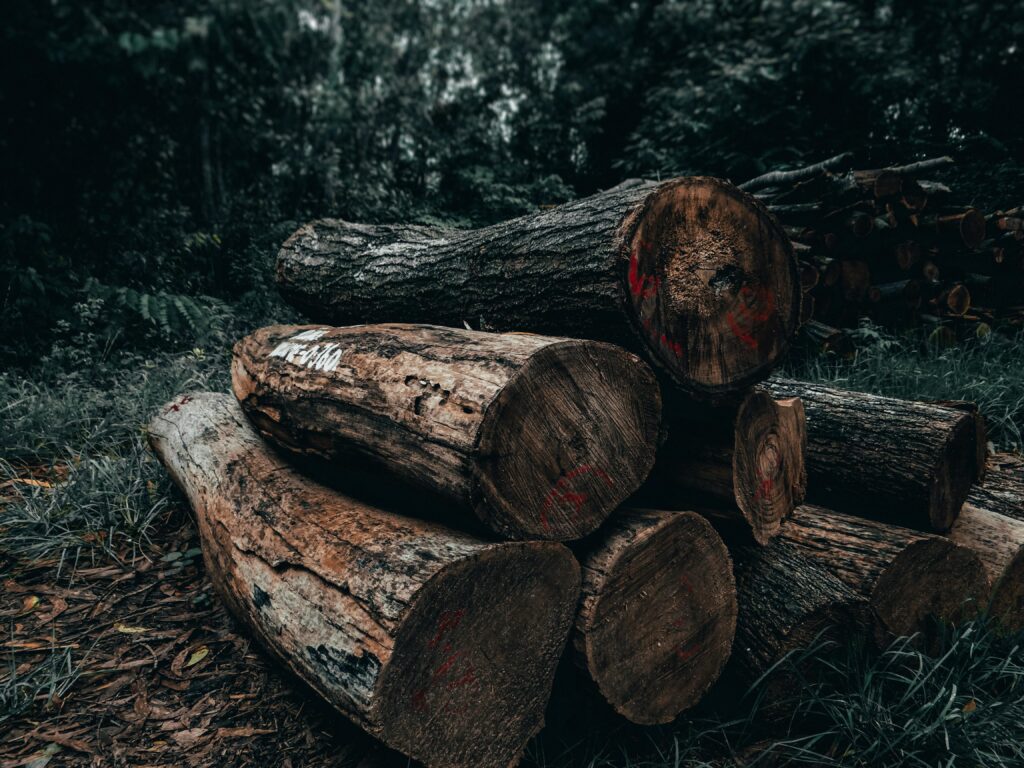
Storage
There are a lot of opinions and do’s and don’ts of how to store firewood. The basic idea is this, you want airflow. Airflow will cause the wood to dry much quicker. If there is no airflow then the moisture in the logs won’t dry out.
Best practice is that once you’ve split your firewood you should store it raised off of the ground. Commonly a wood pallet or firewood rack work best.
Vented Bulk Bags
Bulk Bags are a great way to sell firewood in bulk since you can load ⅓ of a chord straight into a bag, this offers a great bulk option for customers. Here at St. Boniface Bag Co we offer a Vented Bulk Bag that is great for storing and selling. Because the bag is vented this still allows airflow through the wood. Meaning that as you are processing your firewood, you can load it direct into the bulk bag, store until seasoned and then sell to customer reducing your handling time of the wood.
UVI Protected Mesh Bags
Some mesh bags come with added UVI protection from the sun, allowing you to bundle your firewood ahead of time and store them outside while they season. The mesh allows airflow through the bag and the added UVI protection helps the bag from breaking down in the sun. Our bags come with 1600 hours of added UVI protection.
Why Use Firewood Racks?
When it comes to storing firewood, not all racks are created equal. Firewood racks are specially designed to keep your wood ventilated and shielded from rain. Unlike regular shelves, they come with a breathable waterproof cover that adjusts to fit snugly as your woodpile grows and shrinks.
These racks elevate your woodpile off the ground, preventing moisture and pests from sneaking in from below. It’s a combo deal of airflow and water protection, which ordinary racks just can’t match. Plus, they help maintain seasoned wood in prime burning condition, warding off those pesky wood-boring insects.
Where’s the Best Spot to Store Firewood?
When setting up your firewood rack, keep it at least three feet away from your house—five feet is even better. This distance reduces the risk of pests making their way from the woodpile into your home. Wood-boring bugs love to hitch rides from trees or walls straight into your firewood stash.
Avoid spots with poor drainage or where gutter water could soak your stack during a storm. A dry, elevated spot away from buildings and trees is your best bet. Forget about stashing wood in your garage, basement, or attic for long periods; that just invites unwanted critters inside.
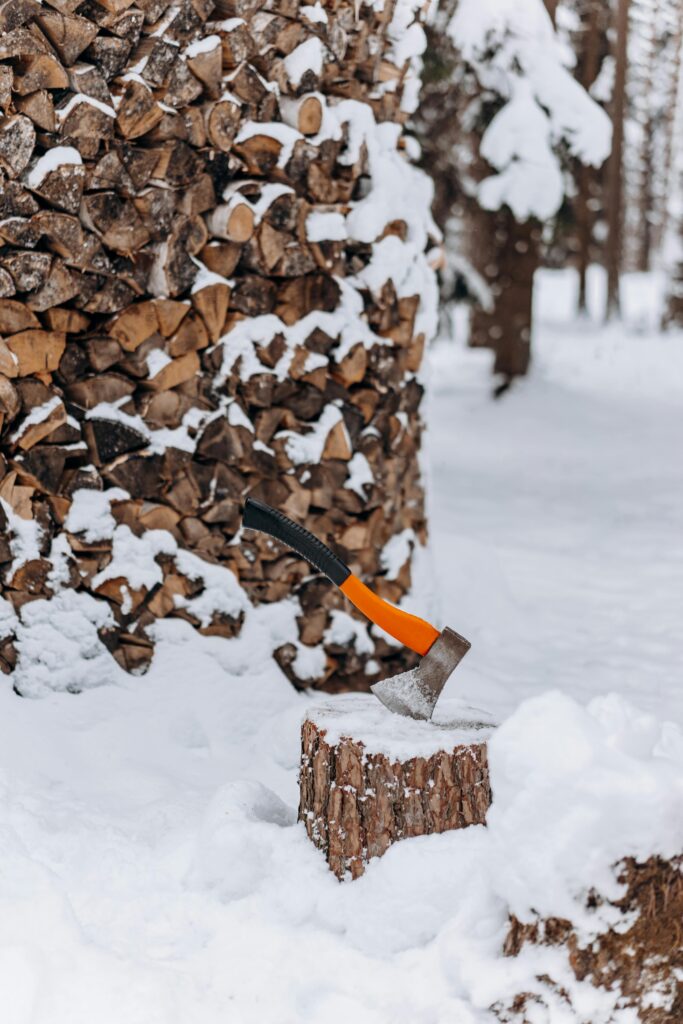
Using a Solid Foundation
To keep your firewood dry from all angles, consider laying down a foundation. A vapor barrier under your rack, a few hefty patio stones, or even a concrete slab can do the trick. These barriers fend off ground moisture, ensuring your wood stays dry and ready to burn when you need it.
How Do You Tell If It Is Seasoned
Color: Seasoned firewood is often more grey in colour. Too much green on the outside means the wood is likely still wet.
Sound: Dry wood has a hollow sound to it. Wet wood sounds heavy and dense.
Smell: Seasoned firewood is often odorless or smells dry. Unseasoned often smells sappy or like mildew.
Weight: Seasoned wood feels significantly lighter compared to moisture-laden green wood.
Bark: Seasoned wood often features bare spots and loose bark, making it easier to handle and stack. Unseasoned wood will often have moss growing on the outside of the bark.
Cracks: Sometimes seasoned wood will have large cracks down the wood. Although not a perfect predictor as unseasoned wood can have cracks as well.
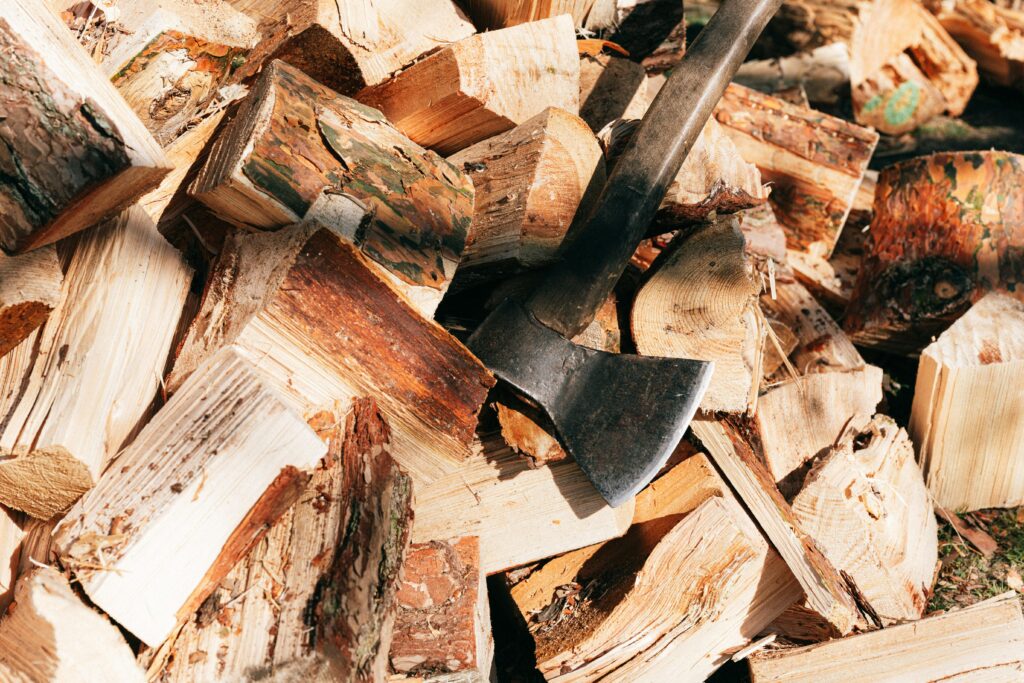
Split Test: Dry wood is much easier to split. When splitting wet wood, often your axe will jam in the wood. Wood processors have a much easier time with wet wood than a typical axe would.
Split Shape: Firewood is usually split before stacking, which aids in faster drying. While not mandatory for seasoning, splitting green wood accelerates the process.
Combustibility: Seasoned wood ignites easily and burns efficiently, producing quick combustion compared to the slower burn of green wood.
Moisture Level: For precise measurement, a moisture meter can determine if wood is adequately seasoned (typically between 10% and 20% moisture content). Simply insert the meter into the wood to obtain an accurate reading.
Identifying seasoned firewood is all about using your senses and a few practical tests to make sure it burns just right. Seasoned wood looks darker, often brownish or grayish, without that fresh green look. Tap two pieces together, and seasoned wood makes a hollow sound, showing it’s dry and ready to burn, while green wood sounds softer. The smell of seasoned wood is mild and woody, not as strong as the sappy scent of green wood. It’s also lighter because it has less moisture, and the bark tends to be loose and easy to peel.
Look for cracks running from the center outwards, though their absence doesn’t always mean the wood is green. Most firewood is split before stacking, which helps it dry faster. Seasoned wood lights up quickly and burns well, unlike green wood, which burns slower and less efficiently. If you’re uncertain, a moisture meter can give you a precise reading—seasoned wood ideally has between 10% and 20% moisture content for the best burn.
By using these simple checks—looking at color and bark, listening to the sound, feeling the weight, checking for cracks, and maybe using a moisture meter—you can be confident in identifying well-seasoned firewood. This ensures your fires burn smoothly and efficiently, keeping you warm and cozy through the colder seasons.
Moisture Content
The University of Tennessee’s publication on firewood emphasizes the critical importance of moisture content for effective burning. Green wood, with its high moisture levels often exceeding 60%, is inadequate for efficient combustion, producing more smoke and potentially causing chimney hazards. Properly seasoned firewood, with moisture content below 20%, ensures cleaner and safer burning, delivering more heat as less energy is wasted evaporating water.
Wood cut and split is dryer in winter than it is in summer. If you have ample access to trees, consider waiting until the colder months to cut your firewood. If you wait then you don’t have to deal with mosquitos, ticks, black flies and the heat! If you have a firewood processor
Moisture Meter
For precise moisture readings you can buy a moisture reader for around $30. Most come with two probes on the end that stick into the wood providing a digital readout of the moisture level in the wood. This is the most accurate and consistent method.
If your wood has a readout of less than 15% moisture content, then it could be too dry! Although not a serious problem, wood that is too dry will burn faster than necessary. Ideally sticking in the 15-25% range is ideal.
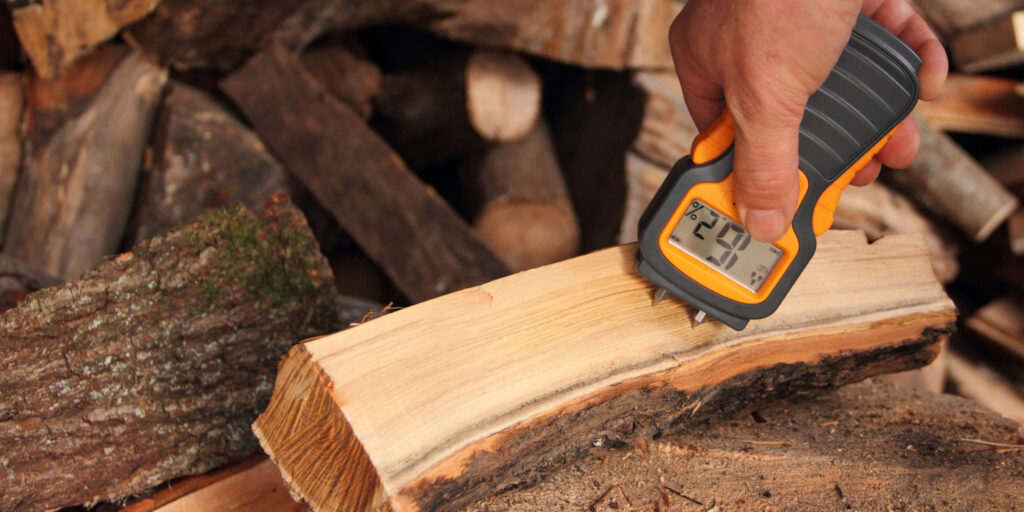
Be mindful to test multiple pieces of firewood. When firewood is stacked and stored, make sure to test pieces that are in the middle as well as outside pieces. Outside pieces will season faster that the inner pieces.
Conclusion
Think ahead of when you need your wood for, most wood takes 6-12 months to season properly. Properly store the wood on pallets, with ample airflow and don’t cover them.
Use a moisture meter reader for exact moisture content, aim for 20% as the sweet spot. To check yourself, check to see if the wood looks wet or does it have cracks? Wood will split easier if it’s dry as well.
As a firewood supplier, having nice seasoned wood is important to make your customers happy to get them coming back to you time and time again.
An option to save handling time is to put your firewood directly into mesh bulk bags or small mesh bags. The mesh style still allows proper airflow so you can store them while they season, then once they are ready you don’t need to do the extra work of bagging them at this point and they are ready to sell!
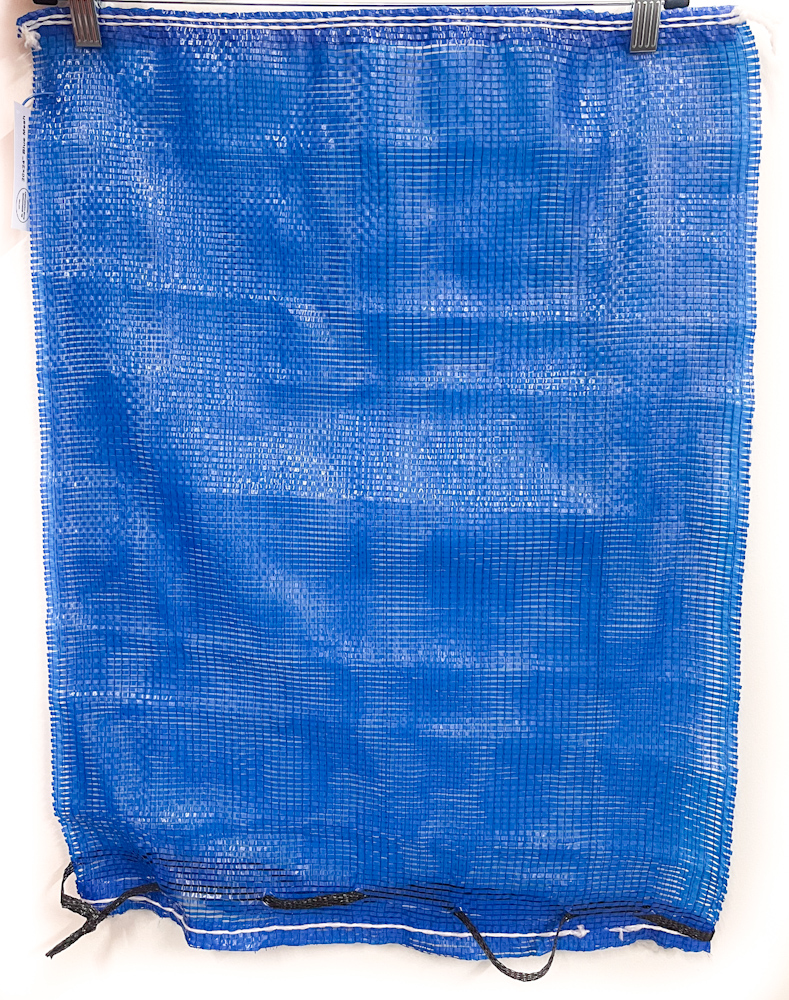
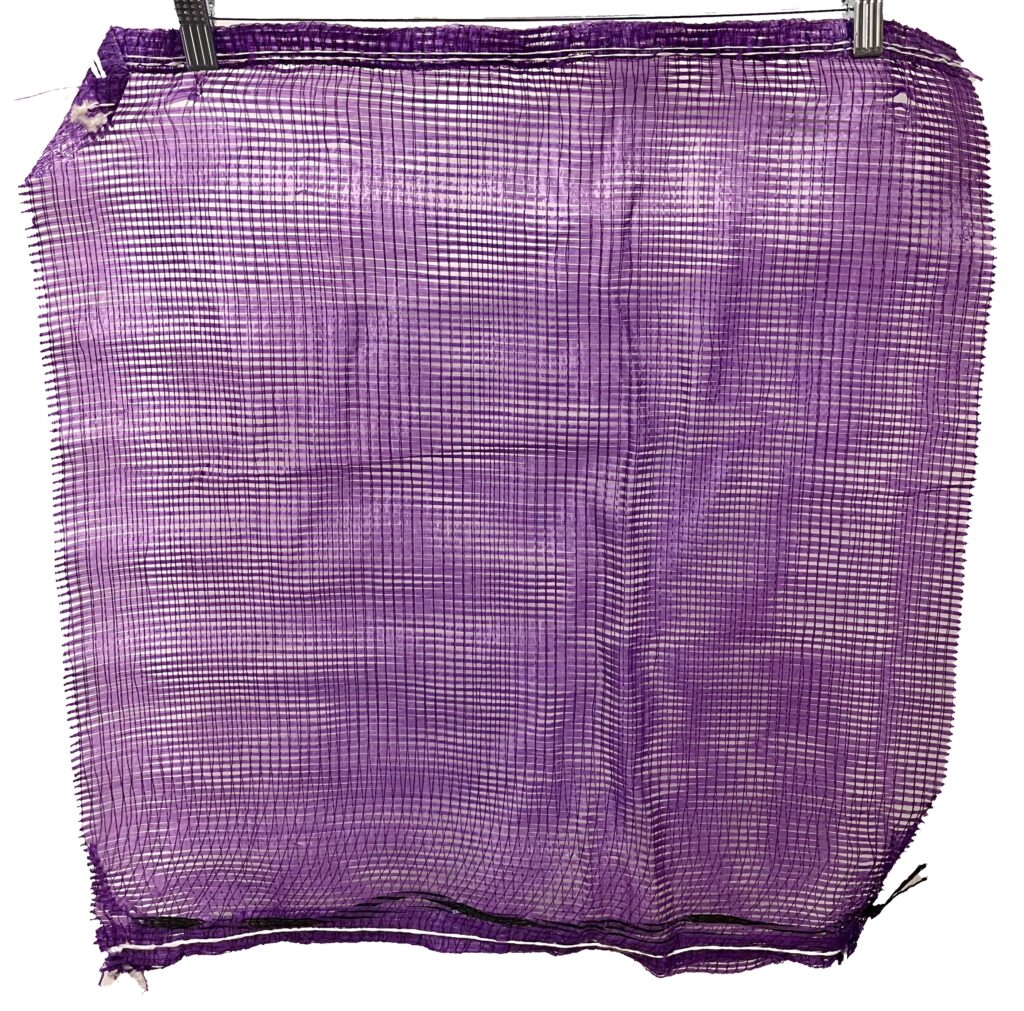
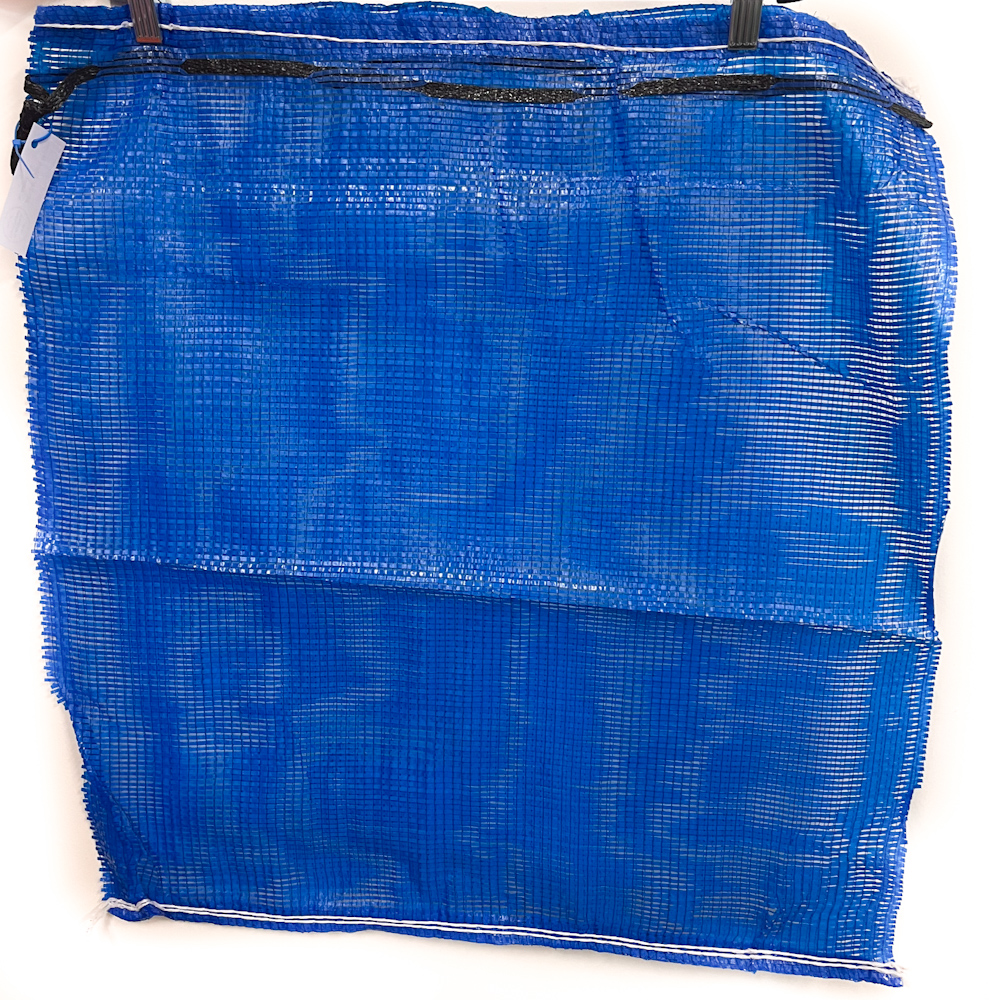
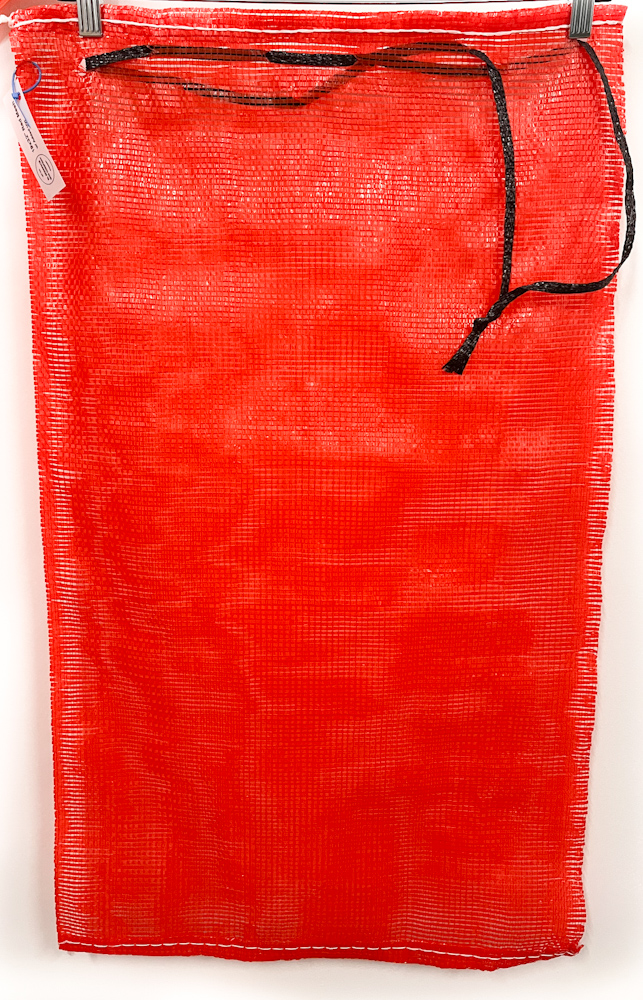
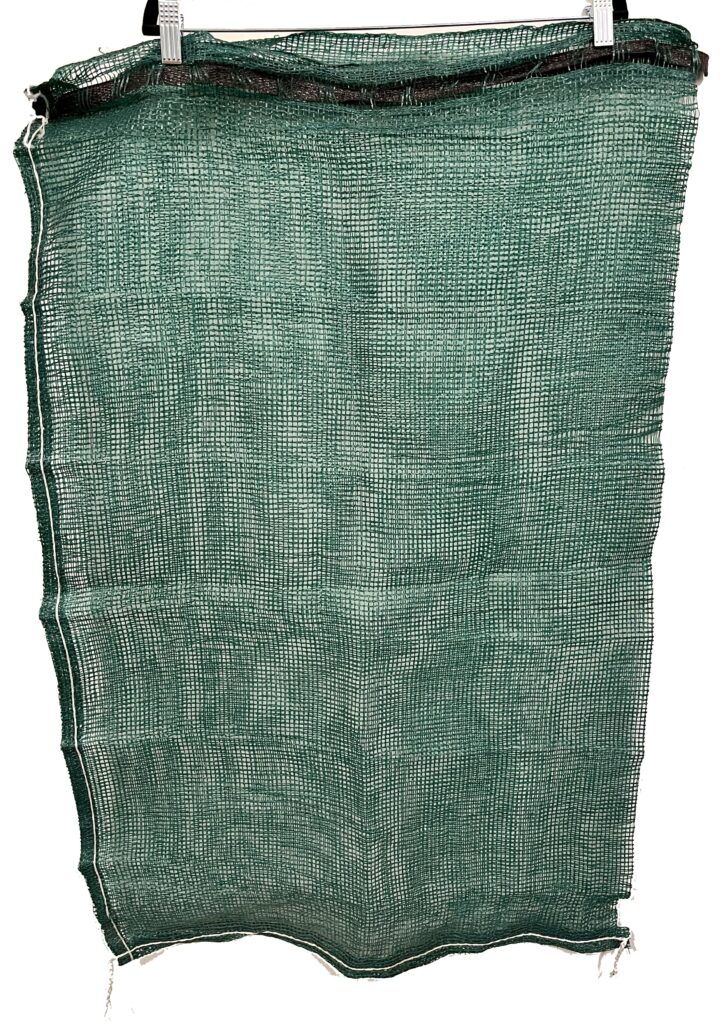
Firewood Mesh Bags
Looking for a great way to bundle your firewood for resale? Our mesh firewood bags are the perfect size and ideal material to help your firewood bundles FLY off the shelf this season.
- Made of durable woven polypropylene with 1600+ hours of UV resistance so your bags will last outdoors while letting your wood continue to air dry and season beautifully
- Wide mouth and built-in drawstring makes for quick packing and a great carrying experience for customers – just throw it in the car!
- Available in 6 convenient sizes and 4 colors to fit whatever firewood length you prefer
Buy 2,000+ units and get a discount at checkout. Request a quote for 10,000+ unit discount




